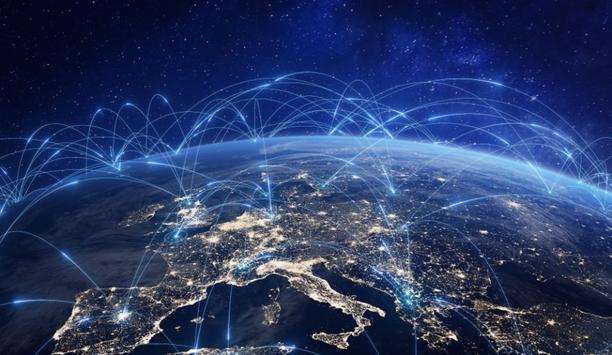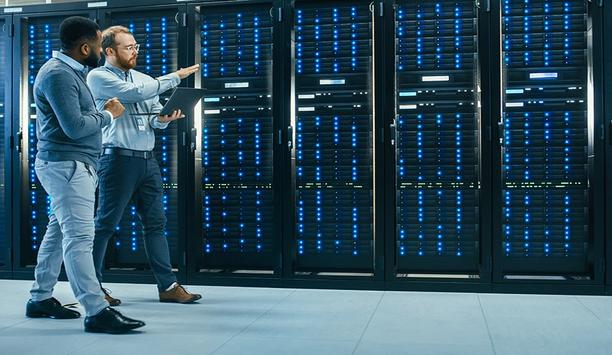What new and emerging threats do security professionals face?
Editor Introduction
There is no shortage of threats facing security professionals, including some that are new and emerging. Understanding various new threats allows individuals and organisations to take proactive steps to protect themselves, but the first step is to identify what those threats are. Early detection of threats can minimise the impact of a successful attack, whatever the vulnerability at issue. We asked this week’s Expert Panel Roundtable: What new and emerging threats will physical security professionals need to be prepared for in the future?
Everything is connected these days and that includes physical and cyber security. These two areas are now more intertwined than ever due to our world becoming increasingly digitised, so physical security professionals need to be just as prepared for cybersecurity threats as they are for everything else. This means that they must take a unified approach to physical security and cybersecurity versus treating them as separate entities. For instance, if a facility’s network camera system is successfully hacked and taken offline, that then creates a physical security issue related to potential breaches of the premises. Because of threats like this – which are continuing to grow in both volume and sophistication thanks to the advent of AI-assisted hacks – physical security professionals must educate themselves on the cybersecurity of the devices they have in their current systems, as well as any new technologies they choose to implement down the line.
Cybercrime is accelerating faster than ever before. According to Cybersecurity Ventures, global crime costs will reach USD 10.5 trillion annually by 2025. There is a common misconception that cyberattacks are the exclusive domain of highly skilled cybercriminals. The availability of easy-to-use, easy-to-acquire hacking tools has made it easier for individuals with limited technical knowledge to conduct cyberattacks. There are also more ready-to-download exploits on the internet today, which are increasing the risk profile that physical security systems face. These enable less technically proficient attackers to deceive individuals and gain access to sensitive information. Another common misconception is that if it is working today, you shouldn’t have to worry about it. Obsolete firmware or a default password creates a foothold for an attacker to compromise the whole network. True resilience requires more offensive cybersecurity strategies along with trusted partners who offer automated tools to better mitigate threats.
The integration of cyber and physical threats is an evolving challenge for security professionals. With the proliferation of IoT devices in security systems, vulnerabilities in these interconnected devices can be exploited to compromise both cyber and physical security. For instance, hackers can disable surveillance cameras or access control systems through cyberattacks, facilitating unauthorised physical access. AI further complicates this landscape by enabling more sophisticated cyber-physical attacks. Adversaries can use AI to identify and exploit system weaknesses, conduct automated reconnaissance, or deploy AI-driven malware that can adapt and evade detection. This convergence of cyber and physical threats necessitates a holistic security approach, incorporating advanced AI-driven cybersecurity measures alongside traditional physical security protocols to detect, prevent, and respond to multifaceted threats effectively. Continuous monitoring, threat intelligence integration, and cross-disciplinary collaboration are crucial to safeguarding against these complex, intertwined security challenges.
Physical security professionals have greater responsibility, and their roles are expanding beyond traditional boundaries as the lines between cyber and physical security continue to blur. The increasing integration of IoT devices, cloud-managed services, and artificial intelligence is advancing physical security system capabilities to be more data-driven with greater focus on analytics and risk assessment to help predict and prevent security breaches before they occur. While the integration of these technologies is revolutionising physical security and surveillance, it also presents new challenges in ensuring systems cannot be compromised or bypassed as breaches in cybersecurity can have direct physical security system consequences. From vendor product selection to system design and deployment, the integration of cybersecurity with physical security protocols is essential. Physical security professionals will need to continually adapt and manage comprehensive security strategies to stay ahead of emerging threats in an increasingly connected world.
Without a doubt, these threats will overwhelmingly be cyber-related, whether it’s related to a physical or digital entry point into your organisation. This requires a constant assessment of your security practices and posture and monitoring of the threats and your best practices. Security practitioners should expect the severity of these threats only to escalate and expect their manufacturer and integrator partners to also be focused on the cyber resilience of their offerings.
In an increasingly interconnected world, emerging security threats demand vigilant preparation. Advancements in artificial intelligence (AI) pose a dual-edged sword in cybersecurity. AI can be exploited to launch sophisticated attacks, such as personalised phishing schemes and adaptive malware. Furthermore, deepfake technology allows for the creation of convincing yet false media, which can be used for spreading misinformation, manipulating public perception, and damaging reputations. The rise of these technologies necessitates robust detection systems and ethical guidelines. As climate change accelerates, it brings an increase in the frequency and severity of natural disasters such as hurricanes, floods, and wildfires. These events threaten infrastructure, disrupt supply chains, and can lead to humanitarian crises. Insider threats remain a critical concern, involving both disgruntled employees and deliberate infiltration by malicious actors. Organisations must implement strong security protocols, employee monitoring, and access controls to mitigate these risks. These emerging threats highlight the importance of comprehensive security strategies, cross-sector collaboration, and continuous adaptation to new risks.
Many experts predict that the ongoing threat of workplace violence incidents will not decrease shortly. Security professionals should be prepared for the active shooter threat to remain steady and/or increase, and strengthen their security readiness with technological tools, such as systems that detect and alert on gunshots in real-time, and emergency response planning to be prepared for these types of threats. Because seconds lost can mean lives lost in a gun violence incident, security professionals need to lean into gun violence detection technology.
The main threats are still focused on cyber vulnerabilities and insider threats, but we must also be future-proofing about how AI will be used against us. The current focus is the insider threat and how we combat that, as this will become increasingly sophisticated in the future. The National Protective Security Authority (NPSA) stated that people are an organisation’s biggest asset, but this can also pose an insider risk. We have talked before about how physical and cyber security measures that we all use continue to blend more and more, and IoT connects everyone. With that blend of security solutions, the risk also opens to the insider threat with people having more accessibility to the data that organisations are trying to protect. A security system should be viewed as an IT system and not a building system. It is the configuration, hardening, and monitoring of that system that will protect what matters most.
The line between physical and cyber security has become more and more blurred in recent decades and security professionals need to be vigilant to more complex threats. Increasingly sophisticated cyber-physical attacks, surveillance, sabotage via drone, and even insider threats impact the specification and ongoing performance of physical security systems. We are seeing increasing demand for security solutions in the data centre market, where physical and virtual assets need to be protected at the highest level.
A concern for physical security is the point of entry. Traditional physical security involves setting perimetres and access control; those methods of layering security often rely on technology and network access and therefore, must be cybersecure. If a security measure is disabled or accessed by an unauthorised party due to a weak password or out-of-date firmware, that measure can be rendered unusable or worse, compromised and, for example, allow entry to an unwanted individual.
Editor Summary
You can’t say you weren’t forewarned! Almost unanimously, our Expert Panelists point to the challenges of cybersecurity as an emerging threat facing physical security professionals. More than ever, the physical and cyber worlds are intertwined, and either could emerge as the weakest link. Therefore, continued vigilance is required for both cyber threats and physical vulnerabilities (including, yes, workplace violence.)
- Related links
- Axis Communications CCTV software
- Axis Communications Access control software
- Axis Communications Digital video recorders (DVRs)
- Genetec Access control software
- Genetec CCTV software
- Salient Systems CCTV software
- Axis Communications Network video recorders (NVRs)
- Genetec Network video recorders (NVRs)
- Salient Systems Network video recorders (NVRs)
- Axis Communications Video signal devices & accessories
- Event Network video recorders (NVRs)
- Biometric Access control software
- Real Time Network video recorders (NVRs)
- Card Access control software
- Control Software CCTV software
- Detection Software CCTV software
- Contact Access control software
- Real Time / Timelapse Network video recorders (NVRs)
- Drawing Software CCTV software
- IP Surveillance Software CCTV software
- Proximity Access control software
- Smart Card Access control software
- Management Software CCTV software
- Central Monitoring Option Access control software
- Recording Software CCTV software
- Monitoring Software CCTV software
- Surveillance Software CCTV software
- Door Monitoring Option Access control software
- Face Recognition Software Access control software
- Management Systems Upgrade Access control software
- Video Detector Video signal devices & accessories
- Remote software for telecode door entry phone system Access control software
- Video Level Indicator Video signal devices & accessories
- Video Line Correctors Video signal devices & accessories
- Video Signal Generator Video signal devices & accessories
- Visitor Management tool Access control software


















